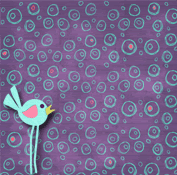There are few things I find more irritating when Web browsing than a site that forces me to click a series of "Next" buttons to view the contents of an article — especially so when the material is so brief that it could easily fit on one page. I'm talking about articles where every couple of paragraphs are on a new page, so that you have to continually click to keep reading, waiting for the page to reload each time. Or "top ten" lists, where each item on the list is on a separate page. Most often, sites do this so as to generate more ad income (as income can depend on the number of times an ad appears). Maybe I'm over-reacting here, but I find this so annoying that I often refuse to play the game and leave the site.
Not anymore. I now use PageZipper. This add-on has been around for almost a year, but I just learned of it a couple of months ago. So I'm assuming you may yet not be aware of it. If so, you have to check it out. With this great utility, you simply use the scroll bars to scroll through the multiple "next" pages. Each time you reach the end of one page, the next page automatically appears. No clicking buttons is required. I have used this with literally dozens of sites now, and it has worked perfectly in almost every instance.
Wanted to know more about page zipper, click on this site:http://blog.e-tms.com.my/merge-a-series-of-web-pages-into-one-with-pagezipper/





